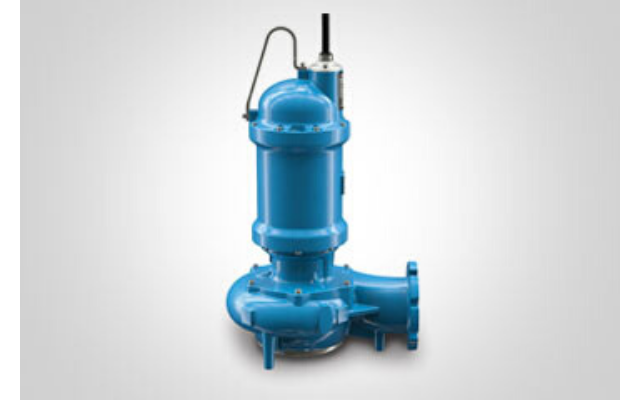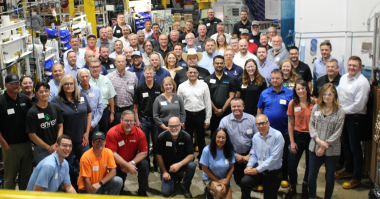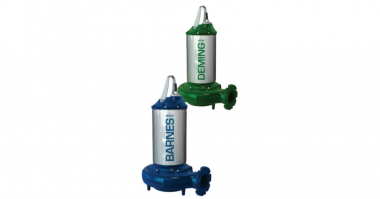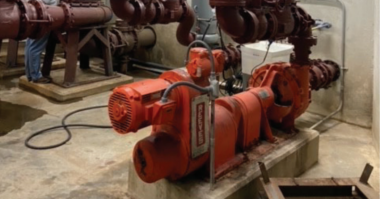Chopper Pumps And Non-Clogging
Chopper pumps are used extensively in heavy-duty solids-laden water applications including municipal wastewater, industrial sewage, food processing, agricultural byproduct, and raw untreated drainage run-off from metal, paper and chemical industries.
Chopper pumps increasing popularity can be attributed to the combination of increasing solids loading in water streams and decreasing water drain-off from residential, commercial and industrial sources. Chopper pumps solve the biggest challenge that municipalities and private wastewater treatment operators face – Clogging.
Chopper Pumps And Torque Requirements
All centrifugal pumps experience hydraulic loading. Chopper pumps are subjected to intermittent chopping loads in addition to hydraulic loads. Empirical evidence suggests that solids-laden municipal wastewater is about 75% to 90% water (this ratio varies with application). This means chopper pumps used in municipal wastewater applications require higher torque than traditional sol-ids handling non-clog pumps to enable them to chop solids 10% to 25% of the wastewater volume.
Chopper pumps are available with different impeller types. Semi-open, mono and dual vane impellers are most commonly used. The Impeller is either hardened to withstand cutting forces or has a hardened rotating blade fixed with pins. The stationery blade or plate, also hardened, is usually an external component attached to the pump casing.
As each chopping edge of rotating blade (or impeller vane) cuts through a solid against the stationery blade (or plate), current drawn from the motor increases and higher torque is required to complete the chopping action. As rotating cutting edges recede from stationery edges after chopping, current and torque drop down to normal levels.
Higher torque is even more important when a chopper pump is switched on. If a chopper pump has hard or stringy solids in chopping edges at the time of starting, the motor should be capable of producing enough torque immediately to accelerate the rotating blade (or impeller) from rest to operating speed and successfully chop the solids. Failure to generate enough torque may result in clogging, stalling, motor overheating and failure.
Chopper Pumps And Variable Frequency Drives
Energy savings, less cycling, less wear & tear and reduced wet well size (in case of submersibles) are the most common reasons users prefer variable frequency drives (VFDs) for pumping applications. For torque requirements discussed above, it is critical chopper pump users use constant torque VFDs.
Theoretically, torque is inversely proportional to speed at constant power. With a VFD, chopper pump’s curve shifts above or below the rated speed, and power changes accordingly. Torque changes with the square of speed. In constant torque VFDs, torque loading is not a function of speed, and hence allow maximum possible chopping torque even when a motor is just started from rest.
Chopper Pumps And Performance With Variable Frequency Drives
As chopper pump speed changes with VFD, pump curve shifts creating a new intersection with system head curve. VFDs provide chopper pumps the ability to operate within the Preferred Operating Range by adjusting speed as system load changes.
Selecting base motor speed relative to the operating range is critical for effective chopping action. When a motor’s base speed is at the lower end of the range and increased to the higher end, higher torques are possible. In addition to higher torque, increasing motor speed to above the rated speed also helps realize rated horsepower, generally preferred for solids handling pump applications.
During chopper pump selection, impeller trims are chosen to be non overloading throughout the curve as much as possible and the closest motor HP is selected. Hence, there may not be enough leeway left for the VFD to increase HP and torque. Care should be taken not to overload the motor while increasing speed beyond the rated speed. It is advised to seek chopper pump manufacturers’ guidance for maximum allowable speed setting. Crane Pumps & Systems, manufacturer of Barnes Solids Handling (SH) non-clog pumps and Sithe Chopper (SC) pumps, recommends motor rated speed as the maximum speed for VFD.
Conversely, if a motor’s base speed is at the higher end of range, torque reduces as the VFD slows down the motor to the lower end. Since power is directly proportional to the cube of speed, horsepower reduces greatly with frequency (speed).
Crane Pumps & Systems recommends 2:1 turn-down ratio max for VFD minimum speed for it’s Sithe chopper pumps.
Upgrading An Existing Solids Handling Non-Clog Pump to a Chopper Pump
Due to chopper pump’s superior non-clogging capabilities, many non-clog pump users upgrade to chopper pumps. While doing so, users have to be cognizant of modifications needed to VFD and its settings.
As long as the motor HP, voltage, phase & frequency are the same, no changes to the panel will be required. However, VFD settings have to be adjusted to reflect changes in rated RPM. Pump manufacturers can provide the right guidance on VFD settings when up-grading a non-clog pump to a chopper pump.
Crane Pumps & Systems recommends referring to its Sithe pump’s full load amps (FLA) and setting the high current trip settings for starters and VFDs at just over the FLA for both its non-clog and chopper pumps. Other manufacturers typically advise 110% of nameplated FLA which is basically the same as any standard pump.
Conclusion
Chopper pumps are highly effective in heavily solids-laden water applications. Using VFDs with chopper pumps save energy costs by increasing efficiency. For reliable chopper pump operation, it is best to use constant torque VFDs and adjust minimum speed, maximum speed and full load amp settings as per pump manufacturer recommendations. It is important to balance high torque requirements, motor characteristics and overall system while using variable frequency drives with chopper pumps.
Sithe Submersible Chopper Pumps Sithe submersible chopper pumps are the newest Barnes solution to clogging in highly demanding municipal wastewater applications. Sithe chopper pumps boast of superior non-clogging & solid size reduction capabilities, highest reliability, serviceability, higher efficiencies and low life cycle costs. Sithe chopper pumps solve clogging by a unique patent-pending open center chopping mechanism that chops even the most troublesome solids in waste stream like stringy material, wood, plastics, baseball, stuffed toys and organics. Sithe chopper pumps feature dual & tri voltage liquid cooled VFD ready motors, patented plug-n-play quick connect cords, class H motor magnet wire, silicon carbide mechanical seals, heavy-duty bearings and large lifting bails.
Sithe chopper pumps are available in 4”, 6”, 8” and 10” discharge sizes, from 3HP to 150HP, in standard and explosion-proof models. Click here to see the Sithe pump in action.





Comments